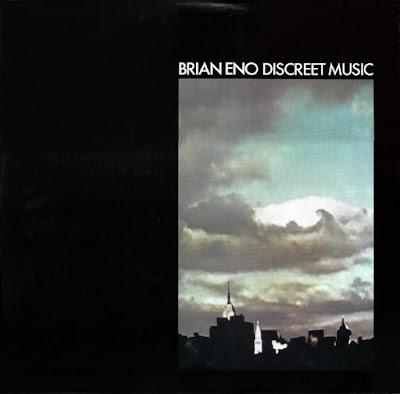Adventures
in Ambient Discovery
There's an oft-repeated quote
that has been attributed to everyone from Elvis Costello to Frank Zappa that
states: "Writing about music is like dancing about architecture."
While I think the inference of the quote is meant to expose the futility of
writing about something that is there to be listened to, experienced and 'felt',
it always leaves me a bit perplexed as to why dancing about architecture would
ever be considered an inherently bad thing? I suppose because for me it
conjures up images and scenes redolent of Wim Wenders' great documentary film,
Pina (2011) - inspired by the dancer and choreographer Pina Bausch - in which
architecture is very literally danced about,
in every sense of the world. Would it not be a pretty remarkable and no less
valid means of communicating the overwhelming importance (or unpleasantness) of
a particular building than putting pen to paper or opening our mouths to speak?
Nonetheless, the original quotation came back to me when I thought about how
best to express the greatness of the album in question, "Discreet
Music" (1975), recorded and produced by Brian Eno.
"Discreet Music"
was Eno's fourth solo album and the second after "Another Green
World" (1975) to slowly progress towards a style of music that would later
be termed 'ambient.' While I wouldn't necessarily categorise "Another Green
World" as an ambient record, specifically - its robust sound, strong
melodies and sporadic use of live vocals still suggest a prominent art-rock
influence - it did contain several tracks that gestured towards the kind of
music beginning to blossom into consciousness here. Some tracks from that
earlier record, such as Becalmed, or Spirits Drifting, lay the groundwork for
the LP in question, as well as subsequent albums, such as "Ambient 1:
Music for Airports" (1978) and "Ambient 4: On Land" (1982).
Given the specifics of its
sound and concept - the drifting otherworldliness of it - "Discreet
Music" remains a difficult album to write about, precisely because, beyond
the facts and practicalities surrounding its production and legacy, it's a work
that lends itself to the most subjective of voice and the most hyperbolic
superlatives. While it might sound achingly pretentious as an endorsement, the sounds,
tones and melodies contained here go beyond music in the conventional sense, and
become instead like colours dripped into a clear body of water that ripple on
the surface before clouding into something more abstract and formless as they
sink beneath the depths. As such, listening to "Discreet Music" is like
witnessing the same colours bloom into the fullness of life and vibrancy, like flowers
do. More than melodies, beats and rhythms, the sound of the music evokes
emotional temperatures; feelings of warmth and coldness; contrasting moods and a
sense of space.
Discreet Music [Brian Eno,
1975]:
While Eno was inspired by
the composer Erik Satie's conception of "furniture music" - meaning
music that is intended to blend into the ambient atmosphere of the room; or as
Satie himself put it, music that could "mingle with the sound of the
knives and forks at dinner" - the experience of the title track is never
uninteresting or disengaging. The sound of it, as it develops across its full
thirty-minute duration, is captivating, if not dramatic, as its melodies and
counter melodies drift like little sound clouds across a slow reverberating landscape
scene. Like certain analogous records by the pioneering German group Kraftwerk
- specifically "Autobahn" (1974) and "Trans-Europe Express"
(1977) - this is music that takes us on a journey. With this in mind, I turn my
attention back to the original album cover, with its distorted video-image of a
dramatic sky above a shadowy city, and its connotations and suggestions of
reflection, the ordinary turned extraordinary, and the passage of time. As with
the very best examples of album-art, the cover image provides the perfect
mirror to the music itself.
As much as I love the
album's title track, it's the B-side of the original record that really
strikes a chord with me. Here, working with composer and musician Gavin Bryars
and members of The Cockpit Ensemble, Eno offers up three different and distinct
interpretations of 'Canon in D Major' by Johann Pachelbel. Already one of my absolute
favourite pieces of music (and a source of continual inspiration, especially
when I was writing my first plays), Eno's variations transform the composition into
standalone pieces that feel new and original, but are nonetheless still haunted
by faint traces of Pachelbel's original melodies. The music presented across
these three tracks is beautiful, transcendent, yearning, sad, mournful and
spiriting. It conjure moods, emotions, memories and reflection and gives the
listener the room to dream. The impression of these compositions is once again like
the passage of clouds as their shadows travel across the patchwork-green
landscapes of some pastoral English Arcadia that exists only between the heart
and mind. Writing seem ineffectual here as I strain to communicate something
that probably exists beyond words. Maybe I should've danced about it instead?




